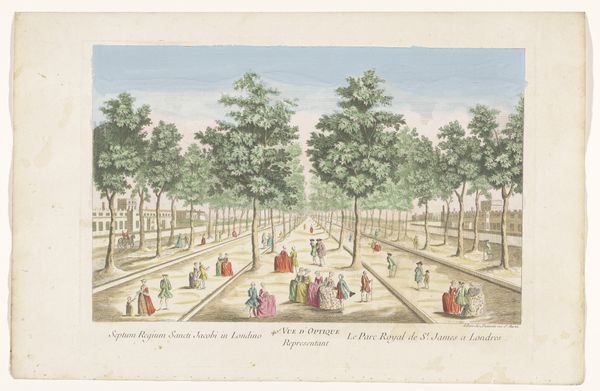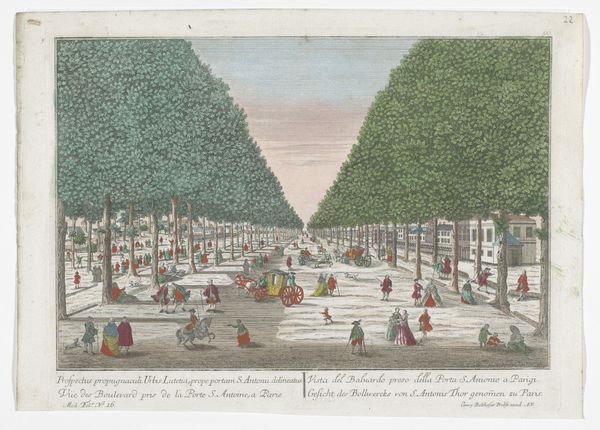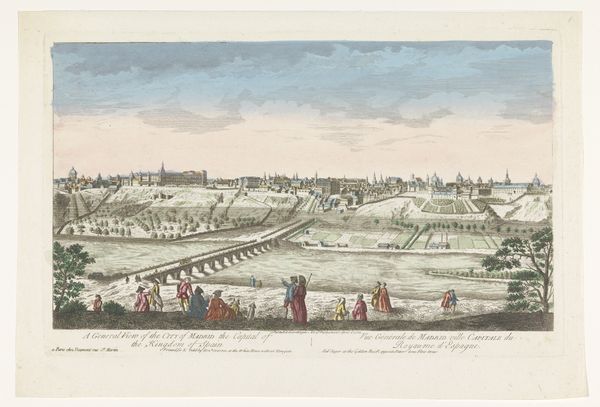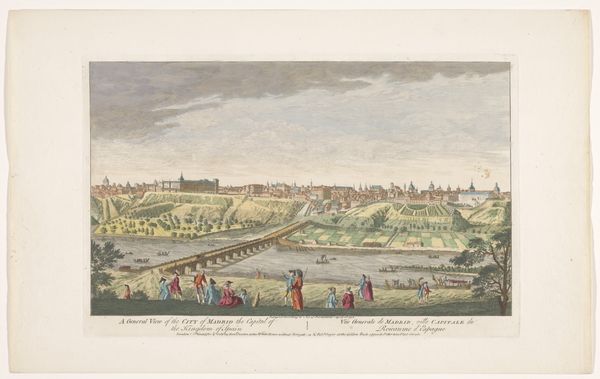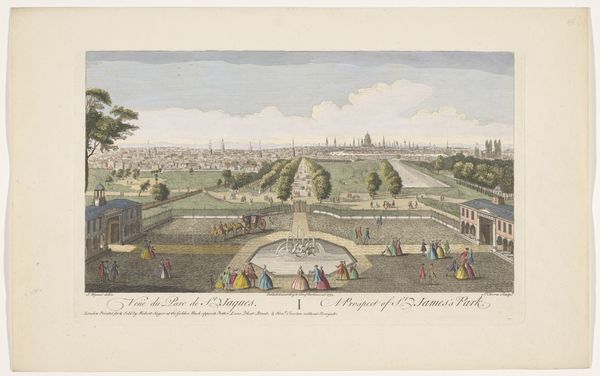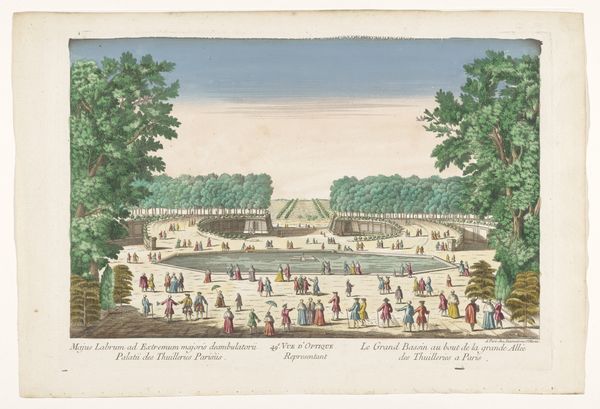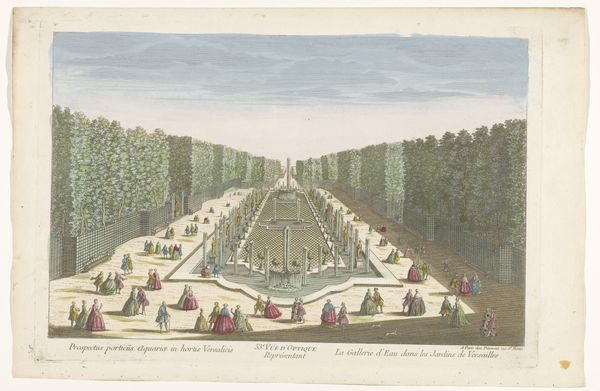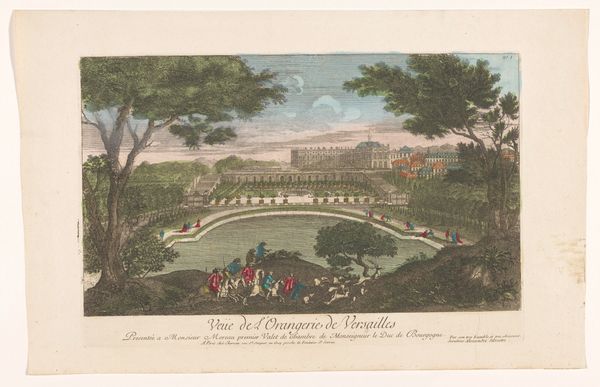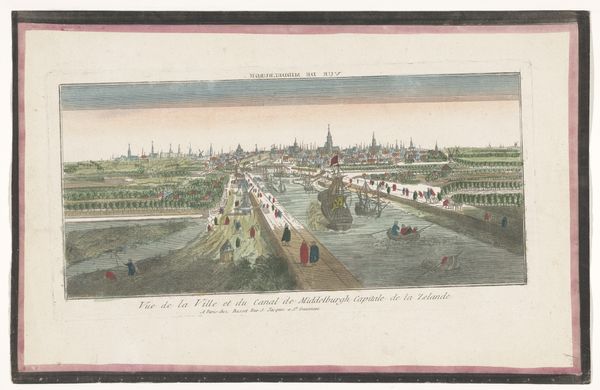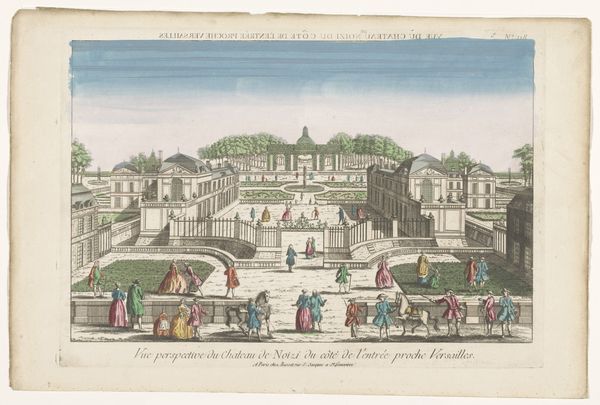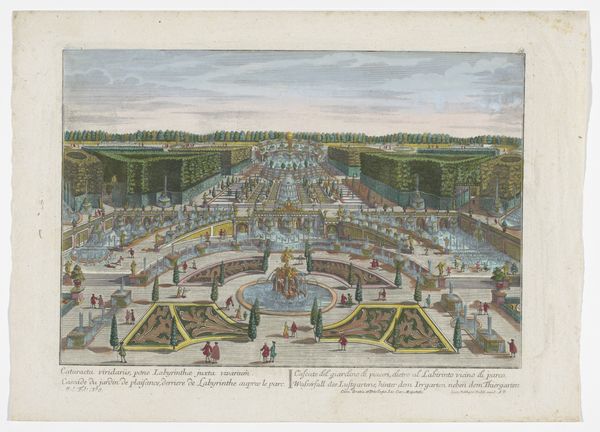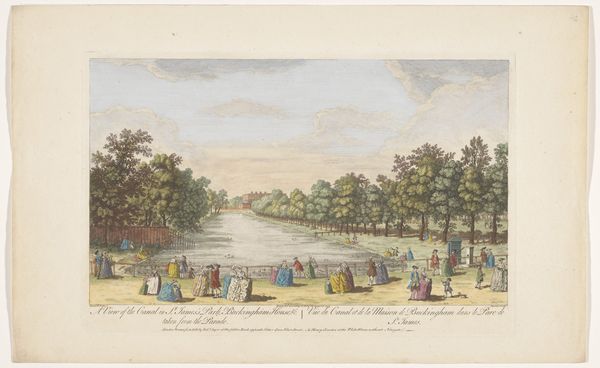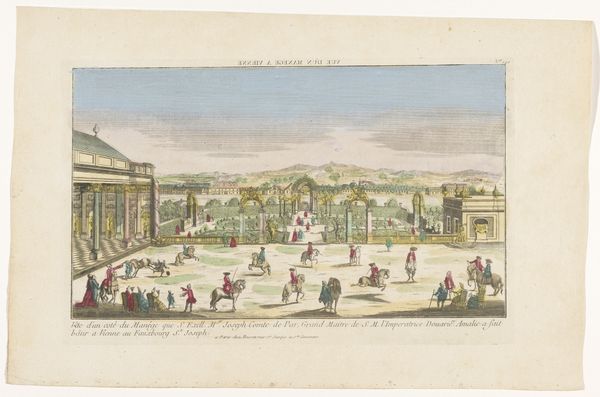
Gezicht op de parterre aan het water en het Grand Canal in de tuin van het Château de Chantilly 18th century
0:00
0:00
basset
Rijksmuseum
plein-air, watercolor
#
plein-air
#
landscape
#
watercolor
#
cityscape
#
genre-painting
#
rococo
Dimensions: height 292 mm, width 421 mm
Copyright: Rijks Museum: Open Domain
Editor: Here we have an 18th-century watercolor titled "Gezicht op de parterre aan het water en het Grand Canal in de tuin van het Château de Chantilly," currently residing in the Rijksmuseum. The composition and cool palette evoke a sense of calm grandeur... What visual elements stand out to you most in this landscape view? Curator: I am drawn to the precise delineation of forms, and the way perspective is employed to organize the space. Observe the strategic placement of figures, serving as visual anchors that lead the eye deeper into the composition. What impact does the artist's use of line have on your perception? Editor: I noticed the linear precision and wonder how it affects the overall tone of the image. To me, the even lighting flattens out the figures, almost reducing them to colorful shapes rather than individuals. Curator: Indeed. This evenness is vital. Focus not so much on representational accuracy but on how shapes interlock within the plane of the image. See how the geometry is not striving for naturalism, yet successfully builds spatial harmony with careful ordering of shapes and colours? Editor: It almost abstracts the garden. Like the buildings, the people almost form shapes more than portraits, is it typical of this style of landscapes? Curator: In certain iterations of the landscape genre, yes. Notice how colour tonality and sharp, receding perspective generate form as well as depth. One might then see how artifice itself becomes the content here. Does it now strike you as intentionally contrived or does that artifice become an aesthetic subject? Editor: I see how the organization becomes an artistic element in itself! Thanks, viewing it through your framework completely changed my perspective. Curator: My pleasure. This exercise is simply about considering elements in relationship with one another within the work, understanding that there are also aesthetic choices rather than failures of representation.
Comments
No comments
Be the first to comment and join the conversation on the ultimate creative platform.
